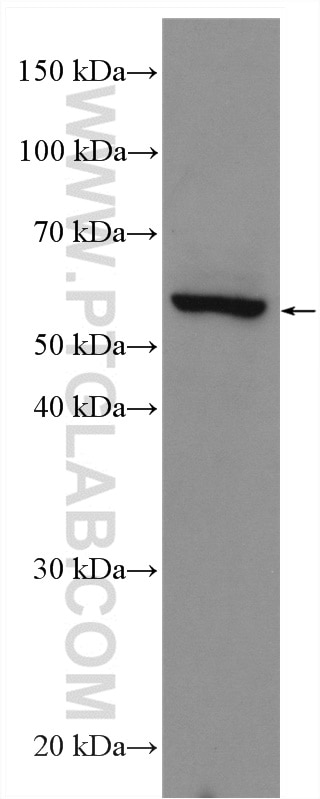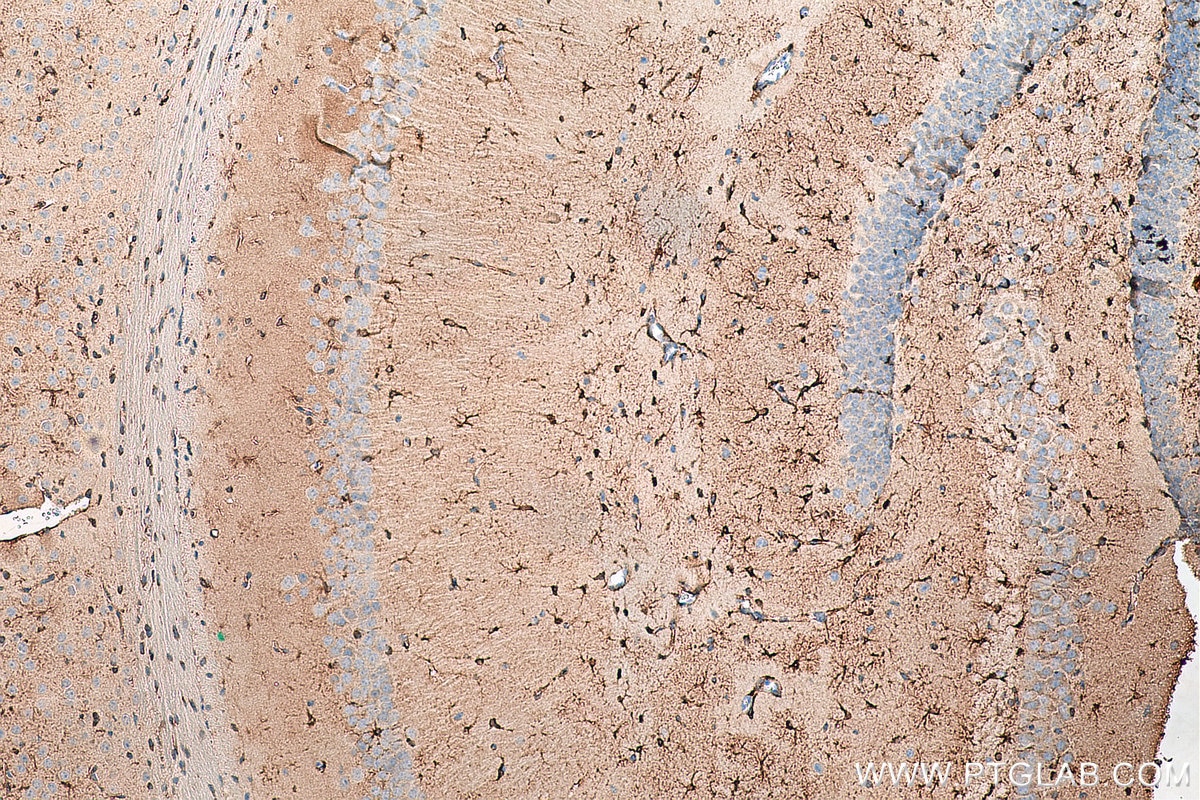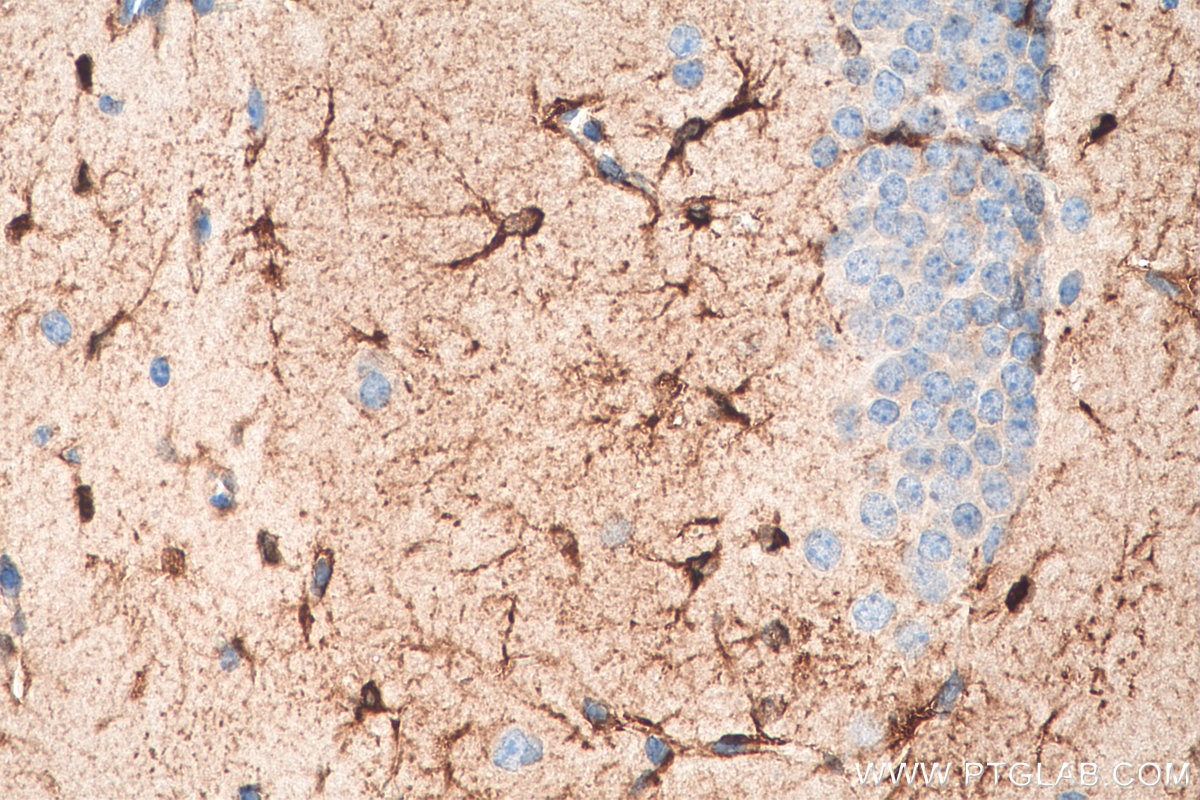Anticorps Polyclonal de lapin anti-Cannabinoid receptor 2
Cannabinoid receptor 2 Polyclonal Antibody for WB, IHC, ELISA
Hôte / Isotype
Lapin / IgG
Réactivité testée
Humain et plus (1)
Applications
WB, IHC, ELISA
Conjugaison
Non conjugué
N° de cat : 29371-1-AP
Synonymes
Galerie de données de validation
Applications testées
| Résultats positifs en WB | cellules MCF-7, |
| Résultats positifs en IHC | tissu cérébral de souris, il est suggéré de démasquer l'antigène avec un tampon de TE buffer pH 9.0; (*) À défaut, 'le démasquage de l'antigène peut être 'effectué avec un tampon citrate pH 6,0. |
Dilution recommandée
| Application | Dilution |
|---|---|
| Western Blot (WB) | WB : 1:500-1:2000 |
| Immunohistochimie (IHC) | IHC : 1:50-1:500 |
| It is recommended that this reagent should be titrated in each testing system to obtain optimal results. | |
| Sample-dependent, check data in validation data gallery | |
Applications publiées
| WB | See 1 publications below |
Informations sur le produit
29371-1-AP cible Cannabinoid receptor 2 dans les applications de WB, IHC, ELISA et montre une réactivité avec des échantillons Humain
| Réactivité | Humain |
| Réactivité citée | souris |
| Hôte / Isotype | Lapin / IgG |
| Clonalité | Polyclonal |
| Type | Anticorps |
| Immunogène | Cannabinoid receptor 2 Protéine recombinante Ag30609 |
| Nom complet | cannabinoid receptor 2 (macrophage) |
| Masse moléculaire calculée | 360 aa, 40 kDa |
| Poids moléculaire observé | 60 kDa |
| Numéro d’acquisition GenBank | BC074767 |
| Symbole du gène | Cannabinoid receptor 2 |
| Identification du gène (NCBI) | 1269 |
| Conjugaison | Non conjugué |
| Forme | Liquide |
| Méthode de purification | Purification par affinité contre l'antigène |
| Tampon de stockage | PBS with 0.02% sodium azide and 50% glycerol |
| Conditions de stockage | Stocker à -20°C. Stable pendant un an après l'expédition. L'aliquotage n'est pas nécessaire pour le stockage à -20oC Les 20ul contiennent 0,1% de BSA. |
Informations générales
Cannabinoid receptor 1 (CNR1, or CB1) and CNR2 (CB2) are members of the guanine-nucleotide-binding protein (G-protein) coupled receptor family. The CB1 receptor is expressed mainly in the brain. The CB2 receptor is expressed mainly in the immune system and in hematopoietic cells. The two receptors have been found to be involved in the cannabinoid-induced CNS effects (including alterations in mood and cognition) experienced by users of marijuana.
Protocole
| Product Specific Protocols | |
|---|---|
| WB protocol for Cannabinoid receptor 2 antibody 29371-1-AP | Download protocol |
| IHC protocol for Cannabinoid receptor 2 antibody 29371-1-AP | Download protocol |
| Standard Protocols | |
|---|---|
| Click here to view our Standard Protocols |




